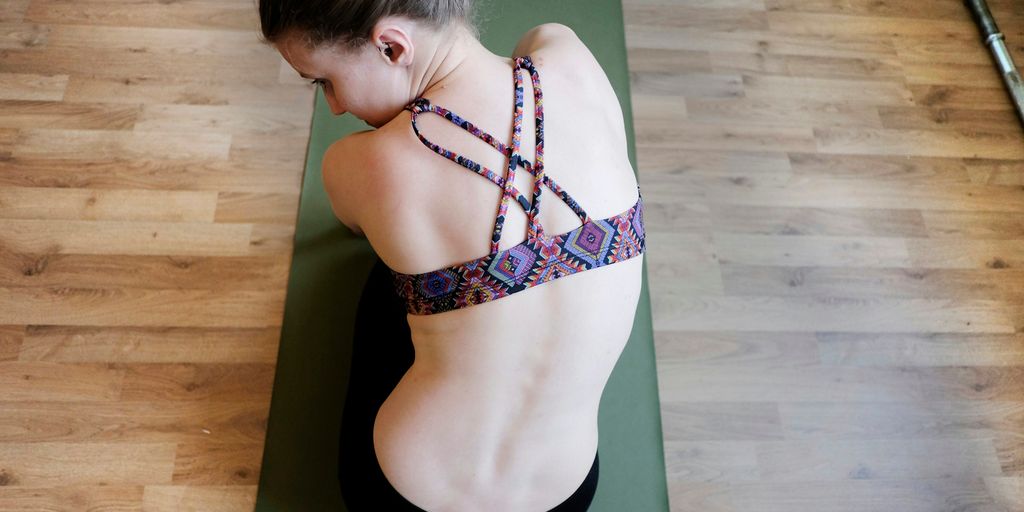
Choosing the Right Yoga Mat Dimensions for Your Practice
Choosing the right yoga mat is essential for a comfortable and effective practice. With so many options available, it's important to know what dimensions work best for you. This guide will help you understand the different sizes, thicknesses, and materials of yoga mats. You'll also learn how to measure your ideal mat size and how the dimensions can impact your performance.
Key Takeaways
- Yoga mats come in various lengths, widths, and thicknesses to suit different needs.
- Your height, practice style, and available space are key factors in choosing the right mat size.
- The dimensions of a yoga mat can affect your stability, balance, and comfort during practice.
- Specialty mats, like travel-friendly or eco-friendly options, cater to specific preferences.
- Proper care and storage can extend the lifespan of your yoga mat.
Understanding Standard Yoga Mat Sizes
Choosing the right yoga mat size is crucial for a comfortable and effective practice. Let's dive into the common dimensions and other important factors.
Common Lengths and Widths
The typical dimensions for a standard yoga mat are about 68 inches long and 24 inches wide. However, extra-long mats can extend up to 84 inches. This additional length is great for taller individuals who need more space.
Thickness Variations
Yoga mats come in various thicknesses, usually ranging from 1/16 inch to 1/4 inch. Thinner mats, around 1/16 inch, offer better stability, while thicker mats, up to 1/4 inch, provide more cushioning.
Material Considerations
Yoga mats are made from different materials like PVC, rubber, and TPE. PVC mats are durable and provide good grip, while rubber mats are eco-friendly and offer excellent traction. TPE mats are lightweight and easy to carry, making them a popular choice for many practitioners.
Finding the perfect fit for your yoga mat involves considering your height, practice style, and material preferences. A well-chosen mat can significantly enhance your yoga experience.
How to Measure Your Ideal Yoga Mat Dimensions
Assessing Your Height and Reach
To find the right yoga mat, start by checking your height and reach. Your mat should be longer than your height to make sure you can stretch out fully. A good rule is to add 6 inches to your height. This way, you won't hang off the mat during poses.
Considering Your Practice Style
Think about the type of yoga you do. If you practice styles like Vinyasa or Ashtanga, you might need a longer mat for those flowing movements. For slower styles like Yin or Restorative, a thicker mat can offer more comfort.
Space Requirements
Look at the space where you'll be practicing. If you have a small area, a standard-size mat might be best. But if you have more room, you can go for a larger mat. Make sure your mat fits well in your practice space so you can move freely.
Choosing the right yoga mat dimensions is key for comfort, stability, and injury prevention. Make sure to consider your body size, height, type of yoga practice, and the space you have available.
Impact of Yoga Mat Dimensions on Performance
Stability and Balance
The size of your yoga mat can greatly affect your stability and balance during practice. A mat that is too small might make it hard to keep your balance, especially in poses that require a wide stance. On the other hand, a mat that is too large can be cumbersome and may not fit well in your practice space. Finding the right size is key to maintaining stability and balance.
Comfort and Support
The dimensions of your yoga mat also play a role in your comfort and support. A longer mat can provide more room for stretching out, while a wider mat offers extra space for movement. If you often practice on hard floors, a thicker mat can add cushioning and support, making your practice more comfortable. Comfort is essential for a good yoga session.
Portability and Storage
Larger mats can be more difficult to carry and store. If you travel often or have limited storage space, you might prefer a mat that is more compact. Some mats are designed to be lightweight and foldable, making them easier to transport. Consider your lifestyle and storage needs when choosing a mat size.
The right yoga mat dimensions can make a big difference in your practice, affecting everything from stability to comfort and portability.
Specialty Yoga Mats for Different Practices
Travel-Friendly Mats
For those who love to practice yoga on the go, travel-friendly mats are a great choice. These mats are usually lightweight and foldable, making them easy to pack in a suitcase or backpack. They are designed to be portable without sacrificing too much on comfort or grip. However, they might be thinner than regular mats, so consider your comfort needs.
Eco-Friendly Options
Eco-friendly yoga mats are made from sustainable materials like natural rubber, jute, or organic cotton. These mats are perfect for those who want to reduce their environmental footprint. Eco-friendly mats often avoid harmful chemicals and are biodegradable. They provide good grip and support while being kind to the planet.
Extra-Wide and Long Mats
If you need more space during your practice, extra-wide and long mats are ideal. These mats offer additional room for stretching and moving, which can be especially useful for taller individuals or those practicing more dynamic styles of yoga. They ensure you stay on the mat, no matter how much you move around.
Caring for Your Yoga Mat
Cleaning and Maintenance Tips
Keeping your yoga mat clean is essential for both hygiene and longevity. Regular cleaning can prevent the buildup of sweat, dirt, and bacteria. Here are some tips:
- Wipe down your mat after each use with a damp cloth.
- Use a mild soap solution for a deeper clean once a week.
- Avoid harsh chemicals that can damage the mat's material.
- Let your mat air dry completely before rolling it up.
Storage Solutions
Proper storage can extend the life of your yoga mat. Store your mat in a cool, dry place away from direct sunlight. Consider these options:
- Use a yoga mat bag to protect it from dust and dirt.
- Roll your mat loosely to avoid creases and cracks.
- If space is limited, a wall-mounted rack can be a great solution.
Extending the Lifespan of Your Mat
To get the most out of your yoga mat, take steps to maintain its quality. Regular maintenance and proper storage are key. Additionally, avoid wearing shoes on your mat to prevent tears and punctures. Rotate your mat periodically to ensure even wear and tear.
Taking good care of your yoga mat not only ensures a clean practice space but also helps you get the most out of your investment.
Choosing the Right Thickness for Your Yoga Mat
Thin Mats for Stability
Thin mats, usually around 1/16 inch thick, are great for those who need more stability. They allow you to feel the floor better, which can help with balance in standing poses. If you practice a lot of balance poses, a thin mat might be your best choice. However, they offer less cushioning, which might not be ideal for poses that put pressure on your knees or elbows.
Thick Mats for Comfort
Thick mats, often about 1/4 inch thick, provide extra cushioning. This makes them perfect for people who need more comfort, especially during seated or lying poses. These mats are also good for those with joint issues. But, they can make it harder to balance in standing poses.
Balanced Options
For those who want a mix of both, mats that are around 1/8 inch thick offer a good balance. They provide enough cushioning for comfort while still allowing for decent stability. This makes them a versatile choice for various types of yoga practices.
Choosing the right thickness for your yoga mat can greatly impact your practice. Consider your needs and preferences to find the perfect mat for you.
When picking a yoga mat, the thickness is super important. A thicker mat gives you more cushion, which is great for your joints. But a thinner mat can help you feel more balanced. Want to find the perfect mat for you? Check out our wide selection at Yune Yoga!
Conclusion
Picking the right yoga mat size is key to a good practice. It can make your yoga sessions more comfortable and enjoyable. Think about your height, the space you have, and the type of yoga you do. A longer mat is great if you're tall, while a wider mat gives you more room to move. Don't forget to try out different mats to see what feels best. With the right mat, you'll be ready to get the most out of your yoga practice.
Frequently Asked Questions
What size yoga mat should I get if I'm tall?
If you're tall, look for a yoga mat that's at least 72 inches long. Some brands offer extra-long mats that go up to 84 inches.
Is a thicker yoga mat better?
A thicker mat offers more cushioning, which can be great for comfort. But if you need better stability, a thinner mat might be a better choice.
How do I clean my yoga mat?
You can clean your yoga mat with a mixture of water and mild soap. Wipe it down with a damp cloth and let it air dry.
Can I use a regular towel instead of a yoga mat?
A regular towel doesn't provide the same grip and support as a yoga mat. It's better to use a mat designed for yoga to avoid slipping and to protect your joints.
What material is best for a yoga mat?
The best material depends on your needs. PVC mats are durable and offer good grip, while natural rubber mats are eco-friendly and provide good cushioning.
Do I need a special mat for hot yoga?
Yes, for hot yoga, it's best to use a mat designed to handle sweat. Look for mats with good grip and moisture-wicking features.


